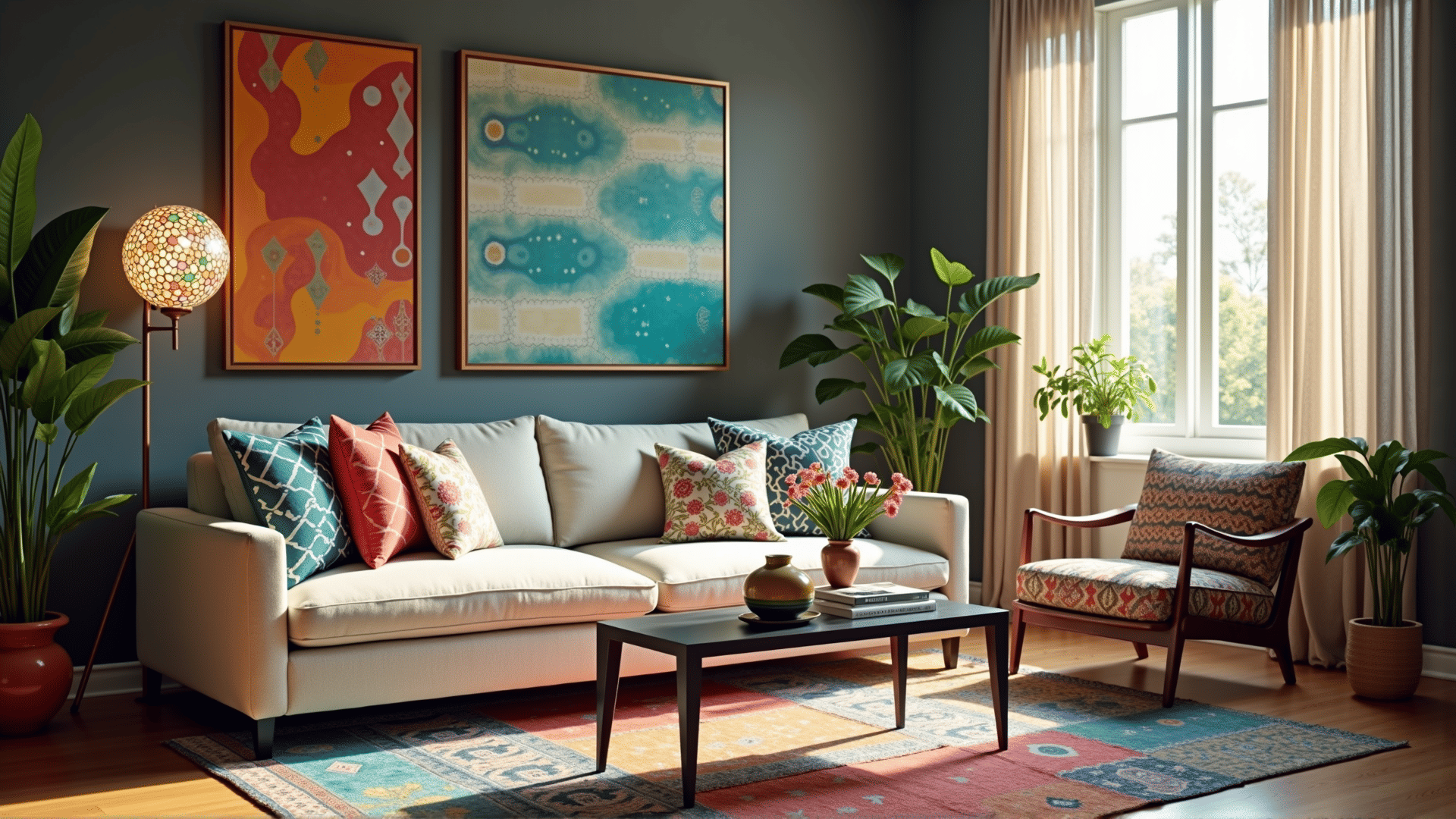Transforming a room into a lively and animated space requires a keen eye for detail and creativity. One effective way to achieve this is by artfully mixing patterns and textures. This design approach breathes life into any room, creating an atmosphere that is both inviting and visually interesting.
Understanding the Basics
Before diving into the world of patterns, it's important to have a good grasp of the basic principles. Patterns and textures can be anything from geometric shapes and florals to stripes and polka dots. Textures range from smooth and sleek to rough and rugged. To create a harmonious blend, it's essential to balance these elements.
Start With a Neutral Base
A neutral base allows patterns and textures to stand out without overwhelming the space. Consider starting with walls painted in soft whites, grays, or beiges. This base acts as a canvas for the more vibrant and dynamic patterns that will be added through furnishings and decor.
Layering Patterns
Layering is key when mixing patterns. Start with a dominant pattern. This could be a large-scale floral on a couch or a bold geometric rug. Next, introduce a secondary pattern that complements the predominant pattern but in a different scale or form. For instance, if your main pattern is large and abstract, a secondary pattern could be small and structured, like narrow stripes.
Coordinating Colors
While mixing patterns, color coordination becomes crucial. Keeping within the same color family ensures a cohesive look. For example, if your dominant pattern has shades of blue and green, choose secondary patterns that incorporate these colors. This creates a unified design without being monotonous.
Texture Adds Dimension
Incorporating a variety of textures adds depth and dimension to a room. Mix materials such as soft, plush cushions with coarse woven throws. Introduce elements like a sleek glass table with a rough-hewn wooden floor. These contrasts in texture enrich the space and enhance the overall design.
The Art of Subtlety
While bold patterns and textures can make a statement, subtlety has its place too. Soft, understated patterns can provide balance to busier elements, preventing the room from feeling chaotic. These subtle patterns often work well in window treatments or smaller accent pieces.
Experiment With Accents
Experimenting with small accents like pillows, rugs, or art pieces is a great way to introduce new patterns without committing to a large change. These items can be easily switched out, allowing seasonal updates or simple style refreshes.
Personal Touch
Incorporating items that hold personal significance can make the space truly yours. Whether it's a patterned quilt passed down through generations or a textured vase collected from travels, these pieces add character and tell a story.
Conclusion
Mixing patterns and textures is an art that can transform any space into a vibrant haven. By understanding the basics of pattern mixing, coordinating colors, and balancing textures, you can create a dynamic and lively living environment. Embrace creativity, and watch your space come to life.
